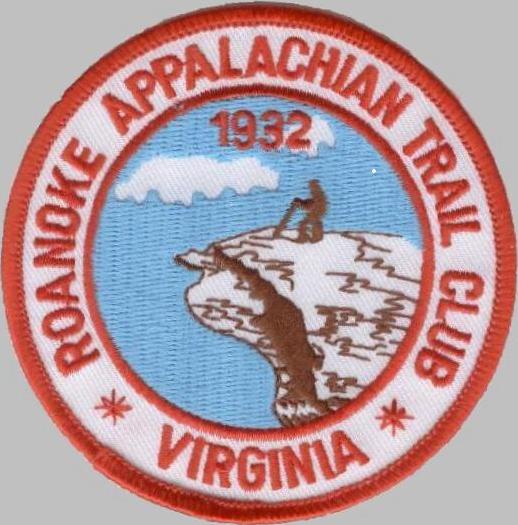Gracie the hiking dog and I joined the Potomac Appalachian Trail Club's Charlottesville Chapter for their Saturday hike on January 19th. The Chapter's own blog reports on the hike and includes several very nice photos from the experience. PATC - Charlottesville Chapter Blog. There is something nice and peaceful about hiking the Blue Ridge Parkway or Skyline Drive when one of these parkways is closed to traffic. It was a very enjoyable hike!
I have hiked with the PATC's local chapter for 20 years now, including a period of about 15 years where I merely read their trip reports but didn't actually attend. When I first moved to Charlottesville, the local chapter provided a great introduction to the area's trails and I was hiking with them nearly every week, but I quickly found myself wanting to explore further and longer than a hiking group tends to go. I stayed a member of the PATC, but it was mostly to have access to their members-only cabins.
About three years ago, my then college-aged niece was staying with us for the summer and expressed an interest in hiking. I showed her how to get started back at school by taking her on a hike with the group; it was my first hike with them in over a decade. Although there were a couple of familiar faces, it was a vastly different group, and the folks I met that day on the trail remain my friends and hound me when I take too long between group hikes. (Saturdays are often taken up by other events...)
Since my return, I have become more active in the PATC, volunteering on the Maps Committee, maintaining a section of the Appalachian Trail in Shenandoah National Park, and taking courses through the PATC in trail maintenance and Leave No Trace. I have also hiked and performed trail maintenance with the PATC's Southern Shenandoah Chapter. And most recently, I have joined the Roanoke Appalachian Trail Club, as my exploration of the Appalachian Trail has taken me close to the sections of trail they oversee. I hope to hike with members of that group in the near future.
I highly recommend membership in your local trail club, as it can provide you with opportunities for hikes that you would not otherwise know about. If you live on the east coast, there are trail clubs maintaining the Appalachian Trail in nearly every state, and most offer regular opportunities for group hikes of every level. Here is a list of Appalachian Trail Maintaining Clubs. I wish I had joined the Maine ATC when I lived up there - I regret not having completed more of the trail when I lived up that way.
 Each A.T. Trail Maintaining Club is overseen by the Appalachian Trail Conservancy, which has a conference every other summer in a community (usually on a college campus) that includes nearby trail hikes, music, and other activities. This summer, the ATC's conference will be at Western Carolina University in Cullowhee, NC, near Great Smoky Mountains National Park. And in 2015, it will be held on the campus of Shenandoah University in Winchester, Virginia.
Each A.T. Trail Maintaining Club is overseen by the Appalachian Trail Conservancy, which has a conference every other summer in a community (usually on a college campus) that includes nearby trail hikes, music, and other activities. This summer, the ATC's conference will be at Western Carolina University in Cullowhee, NC, near Great Smoky Mountains National Park. And in 2015, it will be held on the campus of Shenandoah University in Winchester, Virginia.Another resource in the Northeast and Mid-Atlantic is the Appalachian Mountain Club, which offers hikes from Maine to Virginia through its local affilliates. Pennsylvania alone must have 25 different hiking clubs. And many metropolitan areas have hiking clubs. Examples include the Northern Virginia Hiking Club, Chicago's Forest Trails Hiking Club, And national organizations like the Sierra Club offer hikes in many localities.
No matter where you live, another option is to find a local Meetup group that hikes, through meetup.com. I have joined several, and there are many hikes for beginners and a few for those looking for more of a challenge. Some of the trail groups described above schedule their activities through Meetup.











